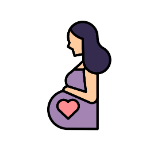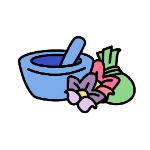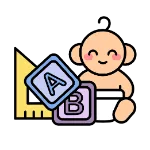
Antenatal Education
Breastfeeding 101: Benefits, Tips And Overcoming Common Breastfeeding Challenges
10 min | Updated on 05-04-2023 by HappyPreggie
(Image credits to Pampers)
Breastfeeding is a beautiful and natural process that provides numerous benefits for both the mother and the baby. For mothers, it’s a way to nourish and bond with her newborn while providing important nutrients and antibodies to support the baby’s growth and development. Moreover, breast milk is also easier for a baby to digest and can help protect against infections and illnesses.
Whether you’re a first-time mother or an experienced one, it’s important to understand the benefits of breastfeeding, learning the different breastfeeding positions, studying the common challenges and knowing how to deal with them. Fret not, as in this blog, we’ll explore these topics together and provide helpful tips and advice for a positive and successful breastfeeding experience. It doesn’t matter if you’re just starting out on your breastfeeding journey or looking to overcome some challenges, read on to learn more about the world of lactation!
Benefits of Breastfeeding
Breastfeeding provides numerous benefits for both the mother and the baby. Here are some of the main advantages:
i. Breast milk is the best source of nutrition for most babies.
Breast milk provides all the necessary nutrients for your baby's growth and development, eliminating the need for expensive formulas. It's easily digestible, adjusts to your baby's changing needs, and helps prevent digestive problems. So, breastfeeding is not only cost-effective and convenient, but also an excellent way to provide your baby with the best nutrition.
ii. Breastfeeding can help protect babies against some short- and long-term illnesses and diseases.
Breastfeeding reduces the risk of chronic diseases such as diabetes, obesity, and cancer for both mothers and babies. Breastfed babies also have lower chances of asthma, SIDS, ear infections, and stomach bugs. Mothers who breastfeed have added protection against some cancers, type 2 diabetes, and high blood pressure.
iii. Breast milk shares antibodies from the mother with her baby.
Breast milk contains antibodies that can help babies develop a strong immune system and protect them against infections and illnesses like respiratory infections and many more.
iv. Mothers can breastfeed anytime and anywhere.
If you’re breastfeeding, you don’t have to worry about having to mix formula or preparing bottles in advance when going out. When travelling or on a long journey to somewhere, breastfeeding can also be a source of comfort for babies whose normal routine is disrupted.
v. Better bonding experience.
Breastfeeding provides an opportunity for mothers and babies to bond emotionally. The skin-to-skin contact and eye contact help strengthen the connection between the mother and the baby.
Types of Breastfeeding Positions
There are several different breastfeeding positions that mothers can try to find the one that works best for them and their baby. Here are some of the most common positions:
a. Laid-Back
(Image credits to Milkology)
This position can be used in the first few weeks after childbirth, and is a good choice if you’re nursing a preemie, twins, or a baby that has difficulty latching on.
How To Do:
- Find a comfortable spot where you can lean back and hold your baby securely against your chest.
- Lean back slightly and allow your baby to move towards your breast, using gravity to help with the positioning and latching.
b. Cradle Hold
(Image credits to Milkology)
This position is the most popular, but it can be difficult to do right from the start. However, once your baby is able to latch on well, this can be a comfortable and common way to breastfeed.
How To Do:
- Sit somewhere with support to keep your arm at the right height, like an armed chair or couch. If needed, you can use pillows to support your arm.
- Position your little one in your lap with their head in the crook of your arm.
- Keep your baby’s chest against yours so they do not have to turn their head toward your breast. If necessary, use pillows to support your baby’s head.
c. Cross-Cradle Hold
(Image credits to Milkology)
This position is best for nursing preemies, newborns and babies that have trouble latching on as you can view your nipple and your baby’s mouth easily, Plus, since you’re holding your baby’s head, you can guide them into a good latch.
How To Do:
- Think of this as the reverse of the cradle hold.
- Position your baby in the opposite direction of the cradle hold with their head in your hand, rather than the crook of your arm.
d. Football/ Clutch Hold
(Image credits to Milkology)
This position is the perfect choice if you’re nursing twins, or have had a C-section since the baby does not lay across your abdomen. Mothers with large breasts or flat or inverted nipples may also prefer this position.
How To Do:
- While turned on your side, hold your baby like a football or rugby ball along your forearm, with your baby’s body on your arm and face toward your breast.
- Position your baby’s legs under your arm.
- Use your other hand to support your breast.
e. Side-Lying
(Image credits to Milkology)
This position is great for when you’re tired and want to nurse while lying down. It can also be useful for nighttime feedings and for moms who have had a C-section.
How To Do:
- Lay on your side and place your baby on their side, facing you, with their head at your breast.
- Support your back with pillows and make sure that your baby’s nose isn’t obstructed.
Common Breastfeeding Challenges
Breastfeeding can come with its fair share of challenges, especially in the early days. Here are some of the most common challenges and how to deal with them:
#1 Sore Nipples
(Image credits to Newborn Baby)
Nipples soreness, cracking or bleeding can be caused by poor latch, friction or a yeast infection.
How To Deal:
- Make sure your baby is latching on properly
- Use nipple cream
- Try different breastfeeding positions
- If the pain persists, consult with a lactation consultant or healthcare provider
#2 Engorgement
(Image credits to Breastfeeding Information)
This happens when the breasts become overfull and swollen with milk, which then causes discomfort and makes it difficult for your baby to latch properly.
How To Deal:
- Breastfeed often and on both sides
- Apply warm compress or take a warm shower before breastfeeding
- Use a breast pump to help drain the breasts
#3 Blocked Milk Duct
(Image credits to AboutKidsHealth)
This happens if breast engorgement continues, and you may feel a small, tender lump in your breast.
How To Deal:
- Try to breastfeed or express milk frequently to help clear the blockage
- Apply a warm compress to the affected breast before nursing or pumping
- Gently massage the breast and use different breastfeeding positions to aid clear the blockage
- Seek help from a healthcare provider or lactation consultant if the blockage does not improve
#4 Low Milk Supply
(Image credits to Today’s Parent)
This can occur for many reasons, such as infrequent breastfeeding or pumping, poor latching technique or ineffective milk flow during nursing, certain medications or medical conditions, as well as stress or fatigue.
How To Deal:
- Try breastfeeding frequently
- Drink plenty of fluids
- Try massaging the breasts or pumping between feedings
#5 Baby Not Latching Properly
(Image credits to Perth CDC)
Breastfeeding is a skill that you and your baby need to learn together and may take some time to get the hang of it. If you find breastfeeding painful or your baby doesn’t seem to be satisfied after feeding, they may not be latching onto the breast correctly. How To Deal:
- Try different breastfeeding positions
- Encourage skin-to-skin contact
- Massage the breasts
- Express some milk
- Offer your baby a pacifier
- Seek support from a lactation consultant or healthcare provider
#6 Mastitis
(Image credits to What To Expect)
Mastitis is an infection of the breast tissue, which can cause pain, redness, and fever. It can be caused by a blocked milk duct or bacteria entering the breast tissue.
How To Deal:
- Continue breastfeeding or pumping frequently
- Apply warm compresses to the affected breast
- Take over-the-counter pain relievers
- Consult with a healthcare provider for antibiotics if necessary
#7 Breastfeeding Strikes
(Image credits to Verywell Family)
Sometimes babies may refuse to breastfeed for a period of time, causing frustration and concern for the mother.
How To Deal:
- Encourage skin-to-skin contact
- Switch breastfeeding positions
- Offer a pacifier to soothe your baby
#8 Leaking Breasts
(Image credits to BabyCentre UK)
Leaking can be caused by an overactive letdown or an irregular feeding schedule.
How To Deal:
- Wear breast pads in your bra
- Try a different bra that fits better
- Adjust your breastfeeding or pumping schedule as needed
#9 Thrush
(Image credits to Insured Ameda Direct)
Thrush can be caused by an overgrowth of Candida albicans in the baby's mouth and can be transferred to the mother's nipples during breastfeeding. Thrush can also develop in the absence of a breastfeeding baby, such as in cases of compromised immune system or antibiotic use.
- How To Deal:
- Take antifungal medication
- Practise good nipple care
- Wash hands frequently
- Wash and sterilise items
- Limit sugar intake
- Seek support from a healthcare provider or lactation consultant
Breastfeeding can be a wonderful and rewarding experience for both mothers and babies, but it also comes with challenges. From difficulty with latching to issues like mastitis and thrush, it's important to remember that these challenges are common and can often be resolved with proper support and guidance. Seeking support from lactation consultants and healthcare providers can help mothers navigate these challenges and feel more confident and comfortable with breastfeeding. So if you're experiencing any difficulties with breastfeeding, don't hesitate to reach out for help – there are many resources available to support you on your breastfeeding journey.
Check out our blogs on the best nursing bras and hands-free breast pumps that can make your breastfeeding journey a much pleasant experience.
Join the largest support network for family health and well-being. Ready to get started?
Get started
















